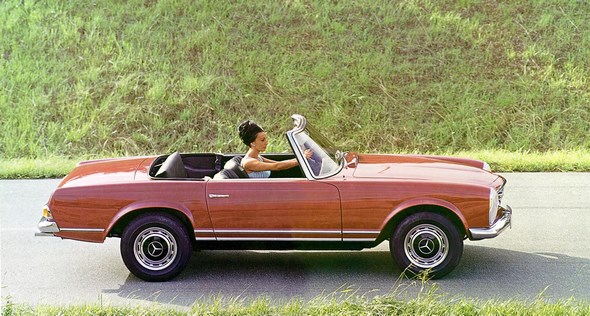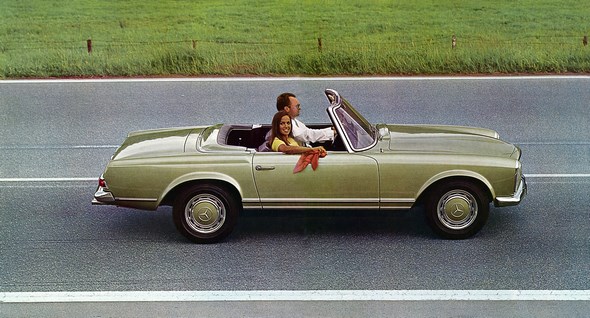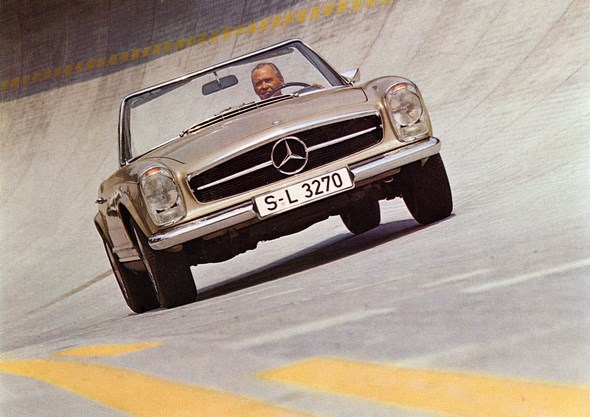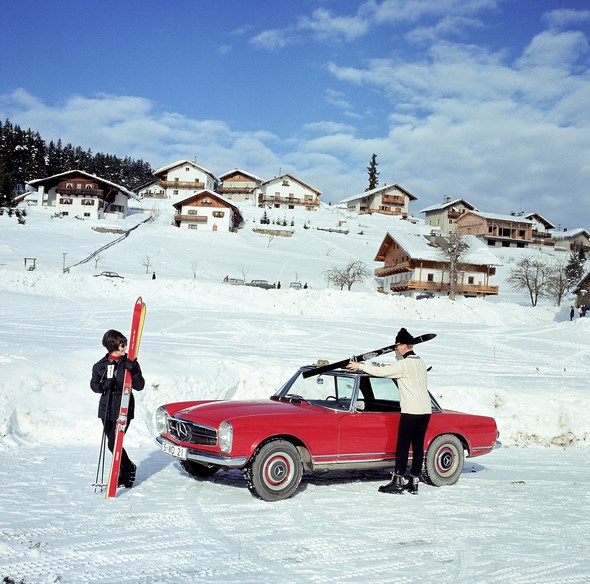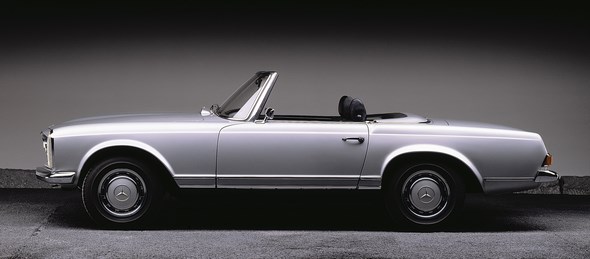Mercedes W113 Pagoda SL 1963 – 1971

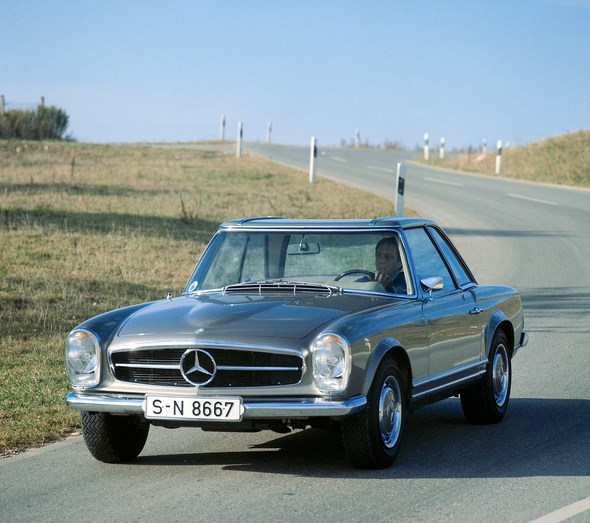
The Geneva Motor Show in March 1963 became the scene of a remarkable debut which was widely covered in the media: With the Type 230 SL Daimler-Benz presented a new sports car which was to replace two models of the former sales programme at once.

The new model was faced with a major challenge – not only because its two predecessors, the 190 SL and the 300 SL, had been extremely popular from the start and the 300 SL had even become a legend during its lifetime.

The real challenge was the fact that, despite many similarities within the family of models, both models represented two radically different design concepts and it turned out to be rather difficult to make out something like a common denominator.

In a sense, the new model represented something of a compromise: the 230 SL, internally code named W 113, was neither an irredeemably tough roadster, nor a gentle boulevard-sports car – rather, it was a comfortable two-seated GT car with an excellent driving performance and maximum driving safety.
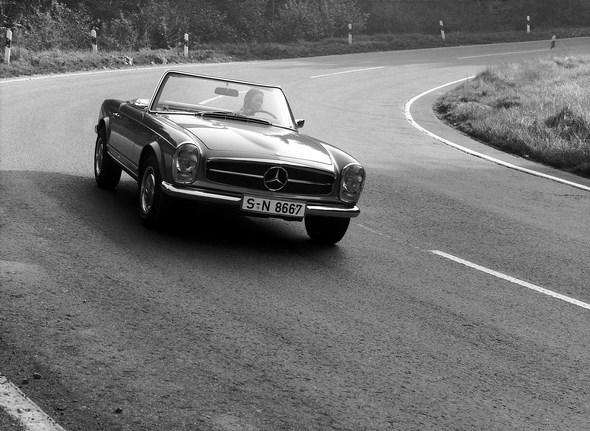
Apart from its wheelbase – the magic measurement of 2400 mm had been taken over unchanged – the new SL had almost nothing in common with its two predecessors.

Still, the W 113 was not simply a new construction as its technical concept was mainly based on that of the 220 SE. For example, the new model took its curtailed and reinforced framework from the tailfin sedan including the front and rear axle suspension. the engine, too, had been developed from the 2.2-liter aggregate of the 220 SE.

By reboring the engine to 2.3 liter, enhancing compression and use of a six-piston injection pump, power was increased to 150 hp.

Apart from the standard 4-speed gearbox, for the first time an SL model had become available with an optional 4-speed automatic transmission.

A third version came in May 1966 with a 5-speed gearbox, produced by the Zahnradfabrik Friedrichshafen (ZF).
The 230 SL was the first sports car with a safety body with stiff passenger cell and deformation zones at the front and rear; this had become possible by applying the construction principles of Béla Barényi, which had been used for the first time in the “fintail” sedans.

In contrast to these invisible construction elements, the body was characterised by one conspicuous design element: The 230 SL came with a removable hood, which had a concave shape, i.e. its surface curves inwards in the middle.

This rather avantgardistic design was unusual for its time and met by no means only with approval. However, it was not an end in itself, but was a classical illustration for the designer maxim that “form follows function”.

According to the work of Béla Barényi, the pagoda shape lends a high degree of stiffness to the roof even if it uses a light construction. Moreover, access had become easier through the big side windows and vision had improved.

As with its predecessor, the 230 SL came in three versions: as a roadster with collapsible hood, as coupé with removable hood and as coupé with removable hood and a roadsterhood. All three versions could optionally be fitted with a transverse seat in the rear.

On 27. February 1967, the 250 SL, which was to replace the 230 SL after four years of production, was unveiled to the public. The newcomer, which was serially produced as early as December 1966, had the same exterior as its predecessor.

Basic changes related to the engine and the brakes, which were derived from the 250 SE model in slightly modified form. The engine, the cubic capacity of which had been increased by 200 cc after the stroke of the piston had been lengthened, achieved the same performance at 10 % higher torque and was moreover equipped with seven camshaft bearings and an oil cooler.

Changes of the brakes comprised disk brakes at the rear wheels, bigger brake shoes at the front and the addition of a brake-power regulator. Incorporation of a bigger 82- instead of the 65-liter fuel tank increased the travel range of the car.

Beside the three 230 SL versions an optional fourth version was available for the 250 SL – a coupé with seats in the rear, which was presented for the first time in March 1967 at the Geneva Motor Show.

The additional space, which had become necessary for the incorporation of the rear seats had become available after the roadster hood and hood box were removed. Because it was impossible to backfit the hood, this version was to be recommended only in areas with little rainfall or after closing the coupé hood.

Less than a year after its presentation, the 250 SL was replaced by a new model. When the new intermediate-class Types were introduced to the markets, not only the saloons, coupés and convertibles of the top class, but also the SL was fitted with a 2.8-liter engine.

Owing to a camshaft with new control times, the engine version built into the 280 SL delivered an additional 10 hp compared to the basic version of the 280 SE.

Compared with the 250 SL engine output had been increased by 20 hp and torque was 10 % higher. Apart from the model badge, the 280 SL could only be differentiated from the two predecessor models by the wheel trim.

In March 1971 production of the 280 SL ended. The successor was the 350 SL, a completely new design, the production of which began in April 1971. A total of 48,912 cars were built of the three 113 series SL-models in eight years.
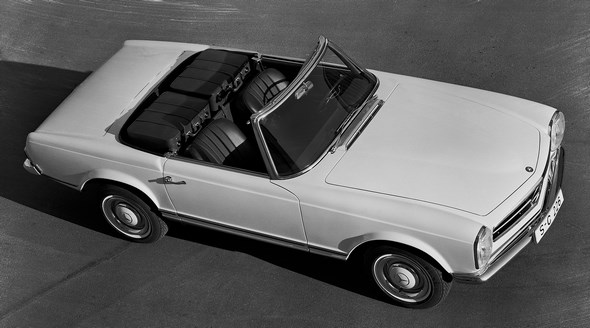
Due to the characteristic shape of the roof the sports car models 230 SL, 250 SL and 280 SL are now generally known as the “pagoda SL”.







